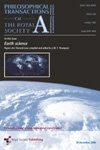Following the previous post and directly related to it, here is a link to my free ebook.
Cogprints-eprints: Metadata Visibility matches "Always Show" AND Subjects matches "Decision Theory"
Conversations on the Search for a ‘Physics & Chemistry – an Alchemy’ of Innovation - Reward Systems. - Alexander, Mr James (2009) Conversations on the Search for a ‘Physics & Chemistry – an Alchemy’ of Innovation - Reward Systems. [Preprint]
It is also one of the approaches which led to my original blog title Conversation-on-Innovations
All My Pages
Where my visitors are
A380's TRENT XWB
Materials Science and Engineering, Durable Development, Recycling..

Custom Search
Blog List-Free Science and Engineering Information Resources cf also Side and Bottom menu bars
-
-
Research Headlines - Motoarele cu ardere internă au un viitor luminos datorită aprinderii cu laser - [image: Image]Până să devină practice și tuturor accesibile mașinile electrice și alte inovații energetice, va mai fi larg folosit motorul cu ardere, rezul...4 years ago
-
Research Headlines - Inteligentne miasta zorientowane na obywateli - [image: Image]Dzięki technologiom IT usługi miejskie mogą być bardziej wydajne, dostępne i przyjazne dla środowiska. By takie rozwiązania były efektywne, m...4 years ago
-
Research Headlines - En route to safer, more reliable autonomous driving - [image: Image]The development of autonomous driving systems is currently a focus of research for the automotive industry. An EU-funded project has moved wo...4 years ago
-
Instant Inflation Systems for Stand-Up Paddle Boards - Inflatable Stand-Up Paddles (SUP) have provided great flexibility to enthusiasts and allowed the sport to grow in popularity. However, manually or electr...6 years ago
-
The List of Online and Free Access Journals about Metallurgy , Mining - The List of Online and Free Access Journals about Metallurgy and Mining RKOJ = Related Keywords of the Journal Open Mineral Processing Journal RKOJ: ...15 years ago
-
-
Scientific Reports - nature.com science feeds
Physical sciences : nature.com subject feeds
Materials science : nature.com subject feeds
Saturday, 21 March 2009
Friday, 20 March 2009
New look at the Processes of Science_How Science Really Works_A Big Picture.
 Step back for a minute and take a new look at our fundamentals as is said in rugby football circles.
Step back for a minute and take a new look at our fundamentals as is said in rugby football circles.No I am not asking the reader to embark on what can be seen as some unpleasant introspection of the human condition it's weakness or failure. On the contrary let's take a break from my/our current bandwagon of economic, climate and energy dilemmas if only to better our approaches to finding "sustainable solutions" to these very serious issues and to look at the positive and strong supportive role of science (in society).
"Science's Big Picture."
 A newly developed website has made understanding science, its processes, it's interactions and it's wide reach, a relatively simple, very attractive and enjoyable task. Although the site has been designed by teachers and lectures for teachers and includes elementary teaching resources, I firmly believe that the site will prove highly significant in clarifying the scientific method not as a linear process but as a system of interactions. It is, not only, a timely reminder and support for all professional in the science industry: a must for all scientists technologists, engineers including science communicators, be they scientists or laymen, but also to the general public, intrigued often worried by the influence of the scientific industry, its technology and engineering on their daily lives.
A newly developed website has made understanding science, its processes, it's interactions and it's wide reach, a relatively simple, very attractive and enjoyable task. Although the site has been designed by teachers and lectures for teachers and includes elementary teaching resources, I firmly believe that the site will prove highly significant in clarifying the scientific method not as a linear process but as a system of interactions. It is, not only, a timely reminder and support for all professional in the science industry: a must for all scientists technologists, engineers including science communicators, be they scientists or laymen, but also to the general public, intrigued often worried by the influence of the scientific industry, its technology and engineering on their daily lives.In fact we are all to some extent scientists, for science arises from observation: observation of our surroundings both the natural world and change as well as man's contribution, material products and systems.
Of course testing ideas remains central to the new presentation, but it's no longer a simple thumbs -up or thumbs-down on a hypothesis. Instead, the data need to be interpreted, and researchers are often forced to go back and either revise their hypothesis, or the assumptions on which the hypothesis is based. No matter what happens, the arrows in the diagram make it clear that the process must be viewed as a system with multiple rounds of testing and revision are needed to refine ideas.
More...
Sources
1. Ars Technica.com/
2. Understanding Science accessed on 20 March 2009. University of California Museum of Paleontology.
Subscribe to:
Comments (Atom)





















